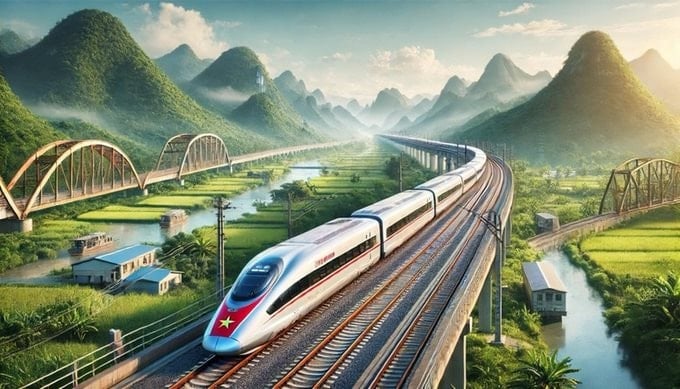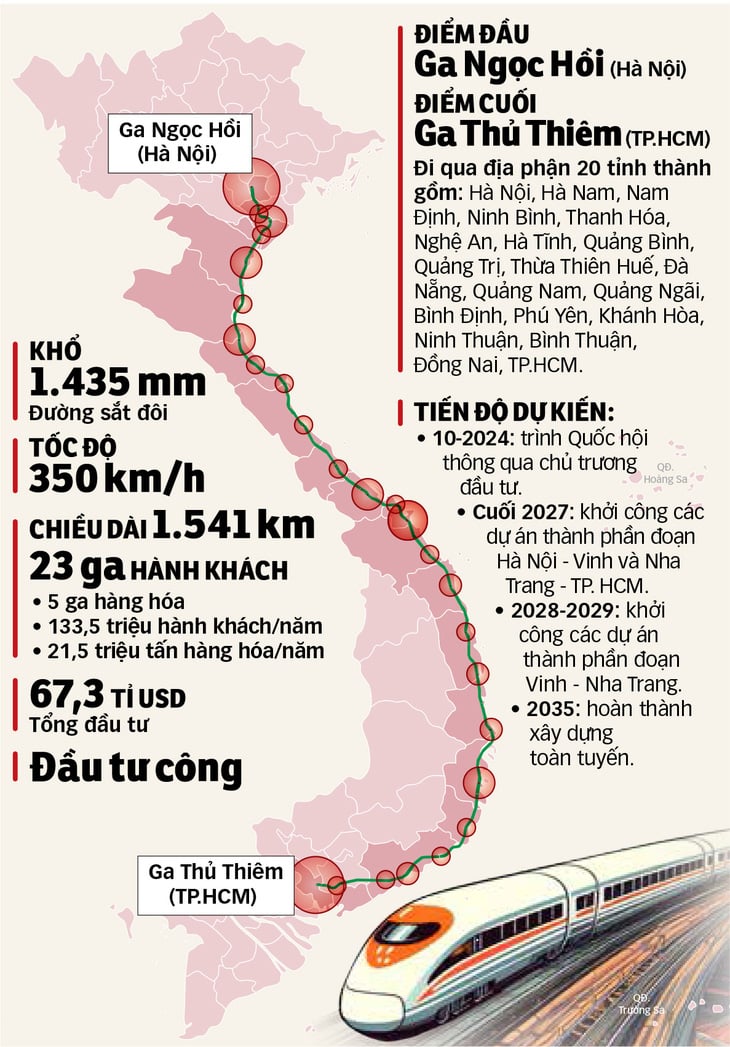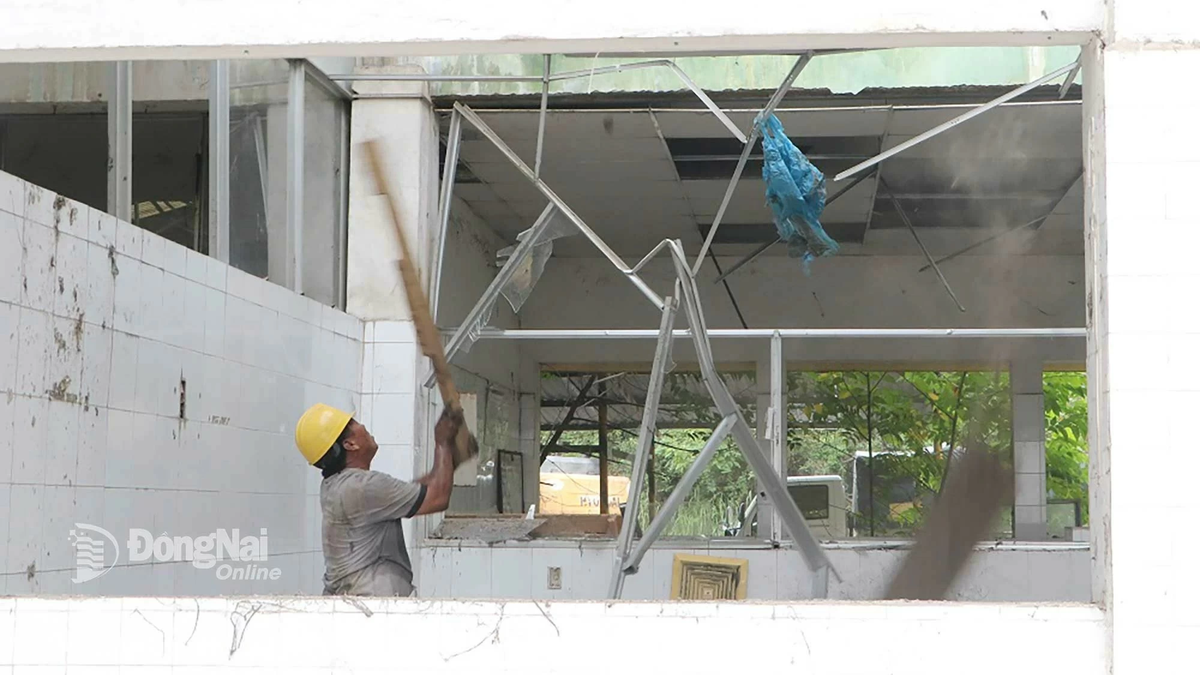
The North-South high-speed railway contributes to boosting Vietnam's economy. Photo: Internet.
According to the plan, this high-speed railway line has a design speed of 350 km/h, starting from Ngoc Hoi station ( Hanoi ), passing through 20 provinces and cities and ending at Thu Thiem station (Ho Chi Minh City). When completed, the project will contribute to increasing railway transport capacity, connecting and promoting the development of key economic regions of the country, and having an overall spillover effect on the economy.
At the 10th Conference, the Central Executive Committee of the Communist Party of Vietnam agreed on the investment policy for the high-speed railway project on the North-South axis, identifying this as a political task and prioritizing investment resources for early implementation. Currently, the project investment policy dossier is being examined by the National Assembly's Economic Committee to prepare a report for the National Assembly to consider at the 8th session of the 15th National Assembly.
In preparation for this project, the Ministry of Transport and relevant units have recently studied experiences and consulted models from 22 countries and territories, and organized learning experiences in 6 countries that own and master high-speed railway technology. Through the research process, the Ministry proposed to invest in the North-South high-speed railway with a double-track scale, 1,435mm gauge, electrification, and infrastructure designed at a speed of 350km/h. The route will start from Ngoc Hoi station (Hanoi), pass through 20 provinces and cities, and end at Thu Thiem station, Ho Chi Minh City. According to the Ministry of Transport, when completed, the high-speed railway will meet transportation needs, contributing to restructuring the transportation market share on the North-South corridor in an optimal and sustainable manner. Mr. Tran Thien Canh, Director of Vietnam Railways, said: "This high-speed railway line meets the transportation needs on the North-South corridor in the coming time. According to calculations, if 4 modes of transport, including: aviation, road, maritime and river, are developed according to the plan, there will be about 120 million passengers/year left on this corridor. That is, no mode of transport can serve that number of passengers. Therefore, the high-speed railway will solve this problem."
 Localities expected to pass through the project. Photo: Internet.
Localities expected to pass through the project. Photo: Internet.Along with the convenient transportation values, the high-speed railway, when completed, will be a big push to change the development space of many localities. The 20 provinces and cities with high-speed railways passing through have the largest population in the country, concentrating development points, development centers and when connected, will spread to other localities, creating favorable conditions for these localities to increase investment attraction when there is good transportation. The high-speed railway will redistribute production resources, redistribute population, redistribute labor and create synchronous development. Professor, Dr. Hoang Van Cuong, economic expert: "The spread of high-speed railway will bring benefits to the economy, especially in logistics. The logistics system is stronger, costs are reduced, economic efficiency is increased, logistics development contributes a lot to added value, creating more development opportunities for newly formed centers. Thus, GDP will increase when we invest heavily. This railway system has a great impact on changing the appearance, changing the development space and changing the development conditions for the regions where this railway system passes through and spreads".
The North-South high-speed railway project has an estimated total investment of more than 67 billion USD, expected to use state budget capital allocated in the medium-term public investment plans. According to the planned roadmap, the project will be submitted to the National Assembly for approval of the investment policy this October; construction will begin at the end of 2027; and the entire route is expected to be completed by 2035./.
Le Quang
























































![[Maritime News] Container shipping faces overcapacity that will last until 2028](https://vphoto.vietnam.vn/thumb/402x226/vietnam/resource/IMAGE/2025/7/30/6d35cbc6b0f643fd97f8aa2e9bc87aea)













































Comment (0)